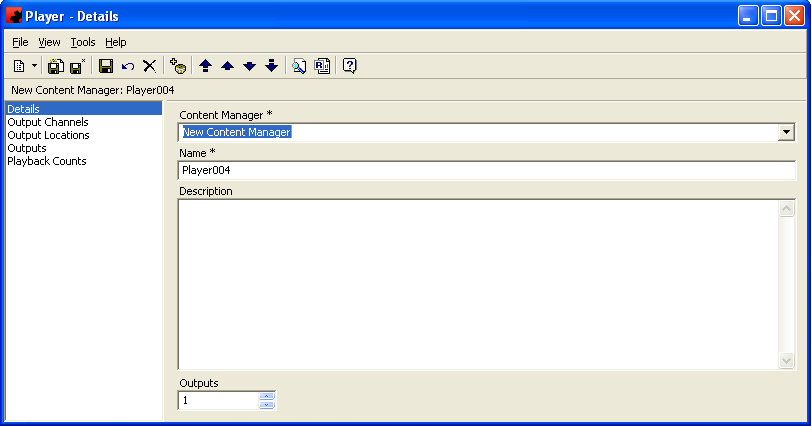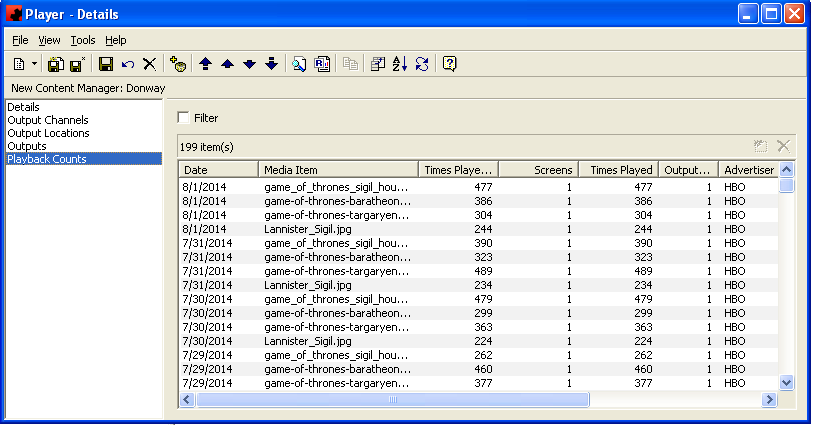Difference between revisions of "Players Digital(2)"
(Created page with "In Digital (2), the Player is associated with the Player in Content Manager. When setting up a player, you need to select the Content Manager that this player is in, and you...") |
m |
||
| (One intermediate revision by one user not shown) | |||
| Line 1: | Line 1: | ||
In Digital (2), the Player is associated with the Player in Content Manager. | In Digital (2), the Player is associated with the Player in Content Manager. | ||
| − | + | [[File:Player.PNG]] | |
| − | + | When setting up a Player, you need to select the Content Manager that this Player is in, and you must enter the Name exactly as it exists in Content Manager (it is case sensitive). You can also specify the number of outputs from the Player (this will set the number of outputs in Content Manager as well). An [[Output]] is the connection between the player and the screen(s) controlled by that connection (e.g. HDMI, DisplayPort, etc). | |
| − | The | + | The user can enter a '''Description''' of this player. This description is only used in Ad Manager as information for the user. |
| − | After you have saved the Player, you can edit the individual | + | The Player screen will allow you to see the '''Output Channel''' that each player is associated with, and the time period it was associated with that channel. Users can also see the '''Output Locations''' the Player has been associated with, and when the Player was used at that location. |
| + | |||
| + | After you have saved the Player, you can edit the individual '''Outputs''' to set the location they are associated with. Users can do this by double clicking on an Output to edit the information as appropriate. | ||
Playback count information is also available at a player level, allowing you to see everything that has played at a given player. | Playback count information is also available at a player level, allowing you to see everything that has played at a given player. | ||
| + | |||
| + | [[File:PlayerPlaybackCounts.PNG]] | ||
Latest revision as of 15:39, 25 November 2015
In Digital (2), the Player is associated with the Player in Content Manager.
When setting up a Player, you need to select the Content Manager that this Player is in, and you must enter the Name exactly as it exists in Content Manager (it is case sensitive). You can also specify the number of outputs from the Player (this will set the number of outputs in Content Manager as well). An Output is the connection between the player and the screen(s) controlled by that connection (e.g. HDMI, DisplayPort, etc).
The user can enter a Description of this player. This description is only used in Ad Manager as information for the user.
The Player screen will allow you to see the Output Channel that each player is associated with, and the time period it was associated with that channel. Users can also see the Output Locations the Player has been associated with, and when the Player was used at that location.
After you have saved the Player, you can edit the individual Outputs to set the location they are associated with. Users can do this by double clicking on an Output to edit the information as appropriate.
Playback count information is also available at a player level, allowing you to see everything that has played at a given player.

